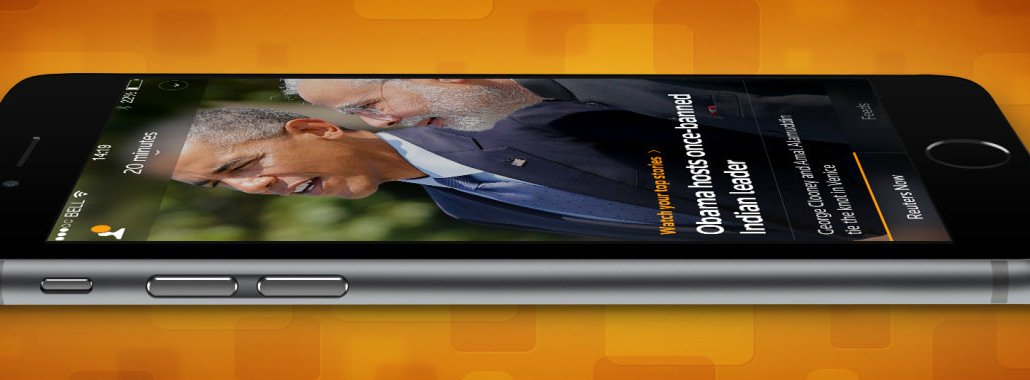
Sometimes it pays to give content away for free.
Reuters is saying that its Reuters TV video streaming service has grown to 1 million monthly users after dropping its $2-a-month paywall in August 2015. Only a fraction of the users still pay $2 for the service, with most preferring the free, ad-supported product, said Reuters TV managing director Isaac Showman. And as much as the change helped get Reuters TV content in front of more users, a number of other factors — including personalized “mid-form” news broadcasts as well as more live content and documentary features — have also helped grow usage.
Today, Reuters TV users are coming to the video service three times a week on average, the company said. On mobile devices, users are spending an average of 12 minutes per session, while on streaming TV devices like Apple TV and Roku, the average time spent is at 21 minutes per session.
The biggest credit for this level of engagement goes to what Showman called “mid-form” programming. These are personalized 5 to 30-minute news broadcasts that pull together different video clips based on factors like how much time the user has to watch video, their location, their viewing history and recommendations from Reuters editors.
“There’s a bifurcation in online video between clips on social networks and long-form content on Netflix: One is watched for seconds while the other is watched for hours. We sit somewhere in the middle,” said Showman. “What makes mid-form valuable is that it’s utilitarian — I have 15 or 20 minutes for my commute — being able to provide value in those moments is something you can use to form habits.”
With 125 employees involved in some way with Reuters TV on a daily basis, Reuters is programming Reuters TV like a “modern” cable news network. Recently, this has meant providing more than just news briefings but also including two other content formats very common on cable news: live coverage of events and deeper, documentary-style dives on various topics like emerging technology and CES.
Reuters is now programming around a dozen editorially-hosted live streams per day on Reuters TV. It’s also creating as many as four additional live videos for Facebook and Twitter, which the company is using to grow more awareness of the Reuters TV product.
“What we want to do is engage users at a base level on these platforms. When we do that well, anecdotally we’ve learned from users that it develops a deeper level of brand preference that makes either our other marketing work better or they organically come and find us,” said Showman.
Up next is a continued effort to scale Reuters TV by retooling the “Reuters TV for Publishers” program, which allows other media companies to embed Reuters video clips on their sites. Reuters has been been working on ways to make the five-minute clips it sends to publishers more personalized to what the user might be looking for on that site or article, Showman said. Reuters will be testing out the more personalized version on its own site this month, with plans to test it out with publishing partners soon after.
For Reuters, the publishing partnership program is its own way of distributing content across a wide medium. While it creates and distributes videos for social platforms, Reuters TV — a video service and ecosystem the company fully controls — remains the bigger bet for its video business. Revenues from Reuters TV went up 450 percent year over year.
“Ultimately, it’s really important as a publisher to control your own destiny. The role that Facebook and Twitter play in news consumption is incredible, but we view those channels far more as marketing channels than as distribution channels,” Showman said. “We’re offering brands a relationship with a consumer who is in the habit of coming to us for 12 minutes at a time. That’s a completely different proposition than a 30-second pre-roll in front of a 15-second clip.”
More in Future of TV

‘A year of loose ends’: Digiday editors share top takeaways from 2025
This year was filled with major developments – from Netflix’s planned WBD deal to Omnicom’s acquisition of IPG to Google’s ultimately cookie reversal – and Digiday editors Sara Jerde and Seb Joseph help to recap the year that was (and wasn’t).

Future of TV Briefing: How the future of TV shaped up in 2025
This week’s Future of TV Briefing looks back at the top topics and trends that overtook the TV, streaming and digital video industries in 2025.

Programmatic agency execs speak out on CTV transparency
At the recent Digiday Programmatic Marketing Summit, agency executives spoke out — on stage and in behind-closed-door town hall sessions — on how they see transparency in CTV.





